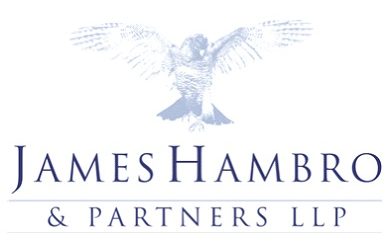Although the content(s) of the article were correct at the time of writing, the accuracy of the information contained within may no longer be current, as it may have been subject to subsequent tax, legislative or event changes. To browse more recent content, please see our Knowledge Centre.
This month:
Opportunities and risks across asset classes
Markets set to pause for breath.
Asian markets may offer value.
Resources sector holds promise.
Oil investors dance the contango.
Featuring this month’s experts:
In this monthly spotlight a selection of leading UK wealth managers share their expert investment views for March 2015.
findaWEALTHMANAGER.com is a gateway to the UK’s leading wealth managers and we regularly tap their expertise for the benefit of our users. These past few weeks, the UK and US equity markets, the prospects of the resources sector, a re-pricing of government bonds and the rise of alternative banking have been top of the investment agenda.
Beware over-exuberance on equities
Insights from:

Tom Becket, Chief Investment Officer at Psigma, says:
Equity markets are likely to be volatile, yet also rewarding, for savvy investors – but they will need to remain nimble and be highly selective in their approach to stock-picking as a correction may well be on the horizon.
The FTSE 100 has deserved to hit a new record high this month and in the medium term we feel that 7,000 and beyond is absolutely possible. We also believe that we will see further progress in our favoured equity markets of Europe, Japan and Asia this year, although we fully expect returns from active managers to be more impressive than headline indices themselves.
However, following a great start to the year investors should probably book some profits and reassess the potential for corporate profits in the year ahead. Equity indices are suggesting that the world has become less risky in the last few months, but a lack of a decisive resolution in Europe, ongoing issues in eastern Ukraine and full valuations of many asset classes hint that 2015 is likely to remain volatile, but ultimately should be rewarding for investors. However, our view from the start of the year that investors will have to be nimble and extremely selective absolutely remains the case.
While we can certainly justify the recent move higher in markets and expected it, we do believe that markets are now in for a period of consolidation or a correction. Sentiment data, such as hedge fund positioning, hints at short-term over-exuberance and with the latest corporate reporting season patchy, rather than strong, we feel a pause for breath is justified.
We have therefore reduced our extended positions in equity markets, taking a few profits in Europe and Japan (where we are overweight), and moved equity allocations back to neutral. Equity markets have generally pre-positioned for an earnings recovery that we feel will be hard to achieve in the US, where earnings are likely to disappoint this year, due to the translational effects of the strong dollar and the impacts from the major reduction in energy companies’ capital expenditure. We certainly feel that profits in Europe, the UK and Japan can meet analysts’ expectations and in some cases surprise to the upside, but markets have arguably already second-guessed this.

Tom Becket
Chief Investment Officer at Psigma
Catching the ripples on US growth
Insights from:

Rosie Bullard, Portfolio Manager at James Hambro & Partners, says:
Equity investors who have missed the recovery of the US market could still catch the ripples by investing in Asian markets like China and India, which stand to benefit from the American recovery and where there is still value to be found.
There remains considerable debate about whether US equities are now overpriced. Year to date in sterling terms, the US market has risen just 3.4% compared with Europe – up 7.4% – with the UK not far behind that, and Japan and Asia delivering currency-fuelled gains of above 6%. Is this a sign of a bull market peaking in North America?
Whilst no longer considered cheap relative to history or other parts of the world, our view is that the US recovery continues. Positive factors such as oil price weakness should boost consumer expenditure, and we are seeing outperformance from many of the domestically-orientated sectors. We see no sign of the US dollar weakening yet, so we continue to support the consensus view of being overweight in the US and dollar assets – for now.
However, having made significant returns in North American equites last year, we now need to start to look for the next success story. One market that still offers reasonable value is Asia. Our expectation is that as well as having higher growth rates versus developed economies, the region should benefit from the US recovery trickling down to its big trading partners.
For investors who are late to the US story, this is arguably a way of catching some of the ripples. At current valuations you are paying less for potentially greater growth, albeit investors need to be selective. Our preference is for China and India, whilst we want to avoid Asia-Pacific countries with a strong commodity bias – a reason why we currently have low or zero exposure to emerging markets like Latin America, Russia and South Africa.
As for the UK, we tapered our enthusiasm last year, partly on concerns around political uncertainty but also because we saw greater opportunities overseas, such as in North America. We must be careful not to be blinkered into thinking politics is the driving force behind equity market returns. In fact – returning to our earlier analogy – the UK may be in a prime position to catch the positive ripples from the quantitative easing programme in Europe.

Rosie Bullard
Portfolio Manager at James Hambro & Partners
The resources sector may still hold rewards
Insights from:

Nick Sketch, Senior Investment Director at Investec Wealth & Investment, says:
Caution on the broad resources sector may well be warranted, but investors need to maintain a balanced view on portfolio construction rather than necessarily rotating away from resources stocks entirely.
Consensus views can be wrong, and that can be dangerous, so it’s always worth asking: “What does ‘everybody’ think today, and what if we are all wrong?”
The consensus view is that the broad resources sector has no attractions. We at Investec Wealth & Investment are not bullish either, but are now looking at the risks to portfolios if this area shows some recovery, as well as the risks if it doesn’t. After all, prices and expectations are already low. Moreover, the falling oil price has put money into consumers’ wallets and a recovering price could take it out again.
Most UK equity funds have a lower-than-index weighting in the broad resources sector. We back managers because we back their judgement, but how we combine funds and the resulting look-through shape of a portfolio is our responsibility. Mixing four or five UK equity funds together might give a strong tilt away from resources stocks – that’s not necessarily wrong, but it is a risk, and managing this sort of risk to keep portfolios on an even keel is necessary if we want to give our selected managers time for their stock-picking skills to bear fruit.
Of course, stock-specific risks will stay high, and this may well be in an era when the strong get stronger and the weak suffer, so chasing high growth opportunities and exciting funds or stocks may not be what’s needed.
One option that we have looked at is Baring Global Resources, now under (fairly) new management. This doesn’t rely on a handful of mega-cap miners or oil stocks (or predicting commodity prices better than others can) to perform, and focuses instead on stock-picking. Another is a structured product backed by RBC, which simply replicates the performance of the world’s top energy stocks. Either could be useful in the year ahead.

Nick Sketch
Senior Investment Director at Investec Wealth & Investment
Dancing the contango props up oil Prices
Insights from:

Ben Kumar, Investment Manager at 7IM, says:
For a factory owner who needs steel in six months, there is the option to either buy the metal now and pay the costs of storing it for half a year; or to agree a price today for the delivery of the steel in six months’ time (i.e. using a futures contract).
There is a phenomenon called “contango”, when the price to buy something a year from now is higher than the price to buy it today – the implication of this is that the market expects the price of the commodity to rise over the next twelve months.
Most financial participants in the market would never even dream of actually owning the goods underlying the futures contracts, and having to deal with the costs of warehouses, transportation and security guards. In the last few months though, some of oil traders have been getting their hands dirty.
The sharp decline in oil has meant that there is an opportunity to buy oil at today’s low price, agree to sell it at a higher price in a year and in the meantime take delivery of it, rent a tanker and leave it floating off the coast. It isn’t an option open to everyone (tankers costing around $50,000 a day to hire), but it is a fantastic example of real world, risk-free arbitrage – as long as the tanker doesn’t sink.
What does this mean for oil prices? Well, it increases the demand for the oil to be delivered today – which should in turn increase the price. As the delivery in this case is physical, it also removes some supply from the market – again supporting the price at the moment. These kind of price dynamics highlight to us how complicated the commodity market can be – we have had no allocation since 2013, and, for the moment, that doesn’t look like changing.

Ben Kumar
Investment Manager at 7IM
Gilts, treasuries give back early gains
Insights from:

Patrick Gordon, Head of Research at Killik & Co, says:
Investors have seen a re-pricing of “safe haven” government bonds and will need to keep a close eye on central bank policy and economic data to see where US Treasuries, UK Gilts and German Bunds are likely to be heading.
2014 was a strong year for “core” government bonds, particularly long-duration debt issued by the UK, US and Germany. 2015 began to shape up in a similar fashion with UK Gilt, US Treasury and German Bund prices rising, and therefore yields declining, as concerns over the situation in Greece and falling inflation, amongst other factors, supported these “safe-haven” government bond markets.
With the ECB about to embark on its programme of quantitative easing in the eurozone, German Bunds have continued to perform well, with the yield on the 10-year German Bund just off its record lows. February, however, has seen 10-year Gilts and 10-year Treasuries give back the gains they made during January. Strong employment data in both the UK and the US, and their respective central banks warning that interest rates could rise sooner than markets currently expect, has led to a re-pricing of these country’s government bonds. The UK 10-year Gilt yield, for example, has moved from a record low 1.33% on 30 January to 1.80% as at the end of February, while in the US, the yield on the 10-year Treasury has experienced a similar move, rising from 1.64% to 2.00%, over the same period
Going forward, government bond prices are likely to be predominantly driven by central bank policy, which in-turn is likely to be largely dictated by economic data. Both the Bank of England and the US Federal Reserve have linked their policies to the degree of spare capacity or “slack” in their respective country’s labour market so measures of wage growth and the labour market participation rate, amongst other factors, should be closely followed.

Patrick Gordon
Head of Research at Killik & Co
Alternative banking opens doors for alternative investments
Insights from:

Chris Kenny, Investment Management Partner at Smith & Williamson, says:
Tighter lending conditions and the fact that investors remain hungry for yield are driving demand for alternative finance as an asset class. Yet peer-to-peer lending and other esoteric debt instruments can carry an additional level of risk investors need to understand.
The rapid growth of alternative approaches to banking has been a phenomenon in the Western world, and increasingly in developing nations. The use of crowd funding and peer-to-peer lending has expanded rapidly, utilising the internet and taking advantage of the retreat of traditional banks from many areas of lending.
However, as the sector has matured, individual investors have begun to look to alternative banking models to help them achieve traditional investment objectives. In particular, investors have had to search more widely for predictable assets with stable income streams, as they have been squeezed out of government and corporate bonds by low yields. With inflation expectations in the developed world remaining suppressed it is unlikely that we will see a change in conditions soon.
Therefore, we have seen the creation of private client-friendly investment vehicles giving access to areas as esoteric as peer-to-peer lending, litigation financing, aircraft leasing and social infrastructure. These funds could give investors incomes of around 4% – 6% from a diversified mix of underlying assets. Some also hope to provide inflation-matching growth in the long-term.
But, a word of caution. The values of funds dependent on long-term future cash flows are as sensitive to interest and inflation rates as any traditional bond. Furthermore, these are early days in alternative banking, so we have yet to see how these new business models will fare during periods of stress. So, in this world of new investments we come back to three age-old disciplines: understanding the management, understanding the valuation we invest at and knowing how to exit.

Chris Kenny
Investment Management Partner at Smith & Williamson
Important information
The investment strategy explanations contained in this piece are for informational purposes only, represent the views of individual institutions, and are not intended in any way as financial or investment advice. Any comment on specific securities should not be interpreted as investment research or advice, solicitation or recommendations to buy or sell a particular security.
We always advise consultation with a professional before making any investment decisions.
Always remember that investing involves risk and the value of investments may fall as well as rise. Past performance should not be seen as a guarantee of future returns.
